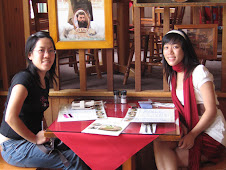the boulders of punggol beach



punggol which is spelt “punggul” in malay refers to the action of hurling sticks at the branches of fruit trees to loosen the fruit from its stem. it also refers to a place where fruit and forest produce are sold wholesale.in the past, punggol was used for rubber planting, poultry farming and pig rearing until poultry and pig farming were phased out from the 1970’s.
punggol end was the place to go to for seafood in the past. there were a number of eateries near the end of the narrow, windy road where two bus services used to terminate. i think they are going to revive the past. i saw a ura signboard that says the area has been earmarked for food and beverage developments.
i was at punggol end for my morning walk. again, i seem to be venturing to places where others do not tread. at punggol beach, during the entire walk, i was the solitary walker. i did meet other people - three cleaners collecting wood pieces from the boulder-strewn beach and an angler trying his luck near the punggol river.the boulders are actually planted there. it is not like they came from that area. it is not like they have tumbled into the sea from somewhere nearby. you can see that some of them have been carefully (painstakingly) laid out to form a kind of platform or steps.
here is what someone, on the internet, speculated about the presence of such boulders:
why is punggol beach covered by boulders artificially? some years ago, there was news that an angler at punggol beach was trying to dig for worms to be used as fish baits. but instead he dug out a human skull. since then the government has paved the whole beach with many heavy boulders. this act is weird as the beauty of a sandy beach is fully covered. but it is suspected to be a purpose of stopping citizens from discovering more human remains from there.







No comments:
Post a Comment